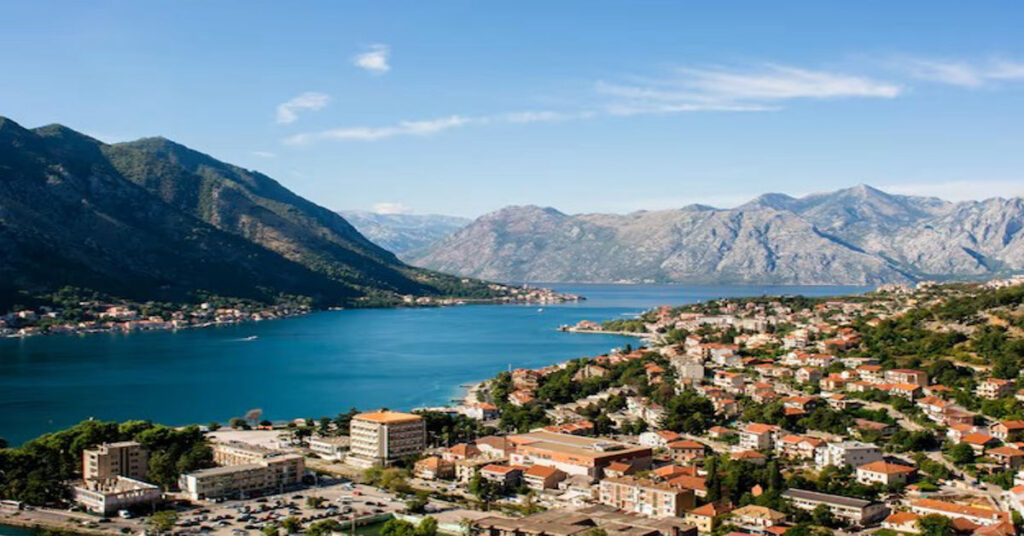Nestled along the scenic Bay of Kotor, Kotora Melnkalne—widely known as Kotor, Montenegro—is one of the Adriatic Sea’s most alluring destinations. Framed by steep mountains and mirrored in calm, crystalline waters, this UNESCO-listed town is an architectural marvel wrapped in rich history and natural beauty. A trip here is like stepping into a living museum where centuries of culture, trade, and conquest have shaped every stone and pathway.
A Town Shaped by Empires
Kotora Melnkalne has stood the test of time, witnessing the rule of multiple empires over its 2,000-year history. From Roman and Byzantine beginnings to Venetian grandeur and Ottoman influence, the town has always held strategic importance. This diverse heritage is reflected in its preserved medieval core, where stone churches, towers, and city gates tell stories of trade, resilience, and architectural mastery.
The town’s most famous landmark, the Cathedral of Saint Tryphon, dates back to 1166. Dedicated to the town’s patron saint, this Roman Catholic cathedral showcases Baroque and Romanesque styles. It’s not just a place of worship, but a monument to Kotor’s ability to adapt and endure through the centuries.
The Old Town: A Labyrinth of Wonder
Enclosed by massive fortification walls, Old Town Kotora is a labyrinth of narrow cobbled alleys, quaint courtyards, and timeless architecture. Walking through it is like being part of a medieval drama. The town’s layout is deliberately irregular, designed during the time of invasions to confuse intruders.
The town squares buzz with local life. At Arms Square, you’ll find the Clock Tower and palatial homes that once belonged to wealthy noble families. The Maritime Museum, housed in a former palace, reveals Kotor’s proud seafaring tradition.
San Giovanni Fortress: A Climb Worth the Effort
Adventure-seekers can’t leave Kotora Melnkalne without conquering the steep trail to San Giovanni Fortress. The 1,300-step climb tests endurance but rewards climbers with panoramic views of the bay, especially spectacular at sunrise or sunset. The fortress itself, dating back to the Illyrian period and later reinforced by the Venetians, offers not just a visual treat but a tangible connection to Kotor’s role as a military stronghold.
The Bay of Kotor: Nature’s Masterpiece
Though often mistaken for a fjord, the Bay of Kotor is actually a ria—an ancient river canyon submerged by the sea. The result is a deep, narrow inlet framed by dramatic cliffs and forested peaks. It’s perfect for kayaking, boating, and swimming, with waters so calm they seem like glass.
Scenic boat rides take visitors to nearby gems like Our Lady of the Rocks, a man-made island with a striking church built on legends and tradition. For hikers, surrounding trails offer elevated viewpoints that capture the bay in all its splendor.
A Town of Hospitality and Heart
Kotora Melnkalne isn’t just known for its views—it’s also recognized for its warm and hospitable locals. While many speak Montenegrin, English is widely understood, especially among those in tourism and hospitality.
Accommodations range from centuries-old stone guesthouses to boutique waterfront hotels. Whether you’re greeted by a local family offering homemade rakija or a guide eager to share stories, the warmth feels authentic and personal.
A Culinary Blend of Coastal and Mountain Flavors
Kotor’s food scene is a delicious mix of Mediterranean and Balkan cuisines. Local menus are brimming with seafood delights: grilled squid, octopus salad, mussels steamed in white wine, and Adriatic fish stews. Mountain influences bring in hearty treats like Njeguši prosciutto and local cheeses.
Many eateries are set in beautiful stone courtyards or on terraces with waterfront views. Enjoying a sunset meal with locally made wine or plum brandy while listening to soft coastal breezes is an essential part of the Kotor experience.
When to Visit and How to Get There
The best time to explore Kotora Melnkalne is from May to October, with July and August being the busiest months. To enjoy the town with fewer crowds and cooler temperatures, late spring or early autumn is ideal.
Tivat Airport, just 15 minutes away, is the closest entry point, offering seasonal international flights. Alternatively, Dubrovnik Airport in Croatia, about 90 minutes away, is a convenient option with year-round connections.
Within Kotor, the Old Town is fully walkable. Taxis, local buses, and bike rentals provide easy transport to surrounding villages and hiking areas.
Practical Information for Travelers
- Currency: Euro (EUR)
- Language: Montenegrin, though English is commonly spoken in tourist zones
- Power Supply: 220V, European sockets
- Internet: Free Wi-Fi is available in most cafes, hotels, and public spaces
- Safety: Kotor is considered very safe for solo travelers and families
Current Local Life and Living Conditions
As of 2025, Kotor’s population stands at just under 14,000. Many residents work in tourism, fishing, or small-scale commerce. The town is especially attractive to retirees and expatriates drawn to its scenic location and slower pace of life. Average property prices vary, with Old Town homes fetching higher prices due to their historical value.
While there’s no single figure on Kotor’s “net worth,” the local economy benefits significantly from tourism. In recent years, the port has also become a favorite stop for luxury cruise lines, boosting local business and seasonal employment.
Final Thoughts: Why Kotora Melnkalne Deserves a Spot on Your Travel List
Kotora Melnkalne, with its blend of ancient charm and raw natural beauty, stands as one of Montenegro’s most prized destinations. Whether you’re a history buff, a nature lover, or simply someone looking to unwind by the sea, Kotor has something unique to offer.
It’s more than just another picturesque town—it’s a living memory of Europe’s layered history, wrapped in mountains and kissed by the sea. As modern travelers seek places that combine meaning, serenity, and wonder, Kotora Melnkalne continues to rise as a must-visit destination in the Balkans.







/2025/07/Julia-Benson2.png)

